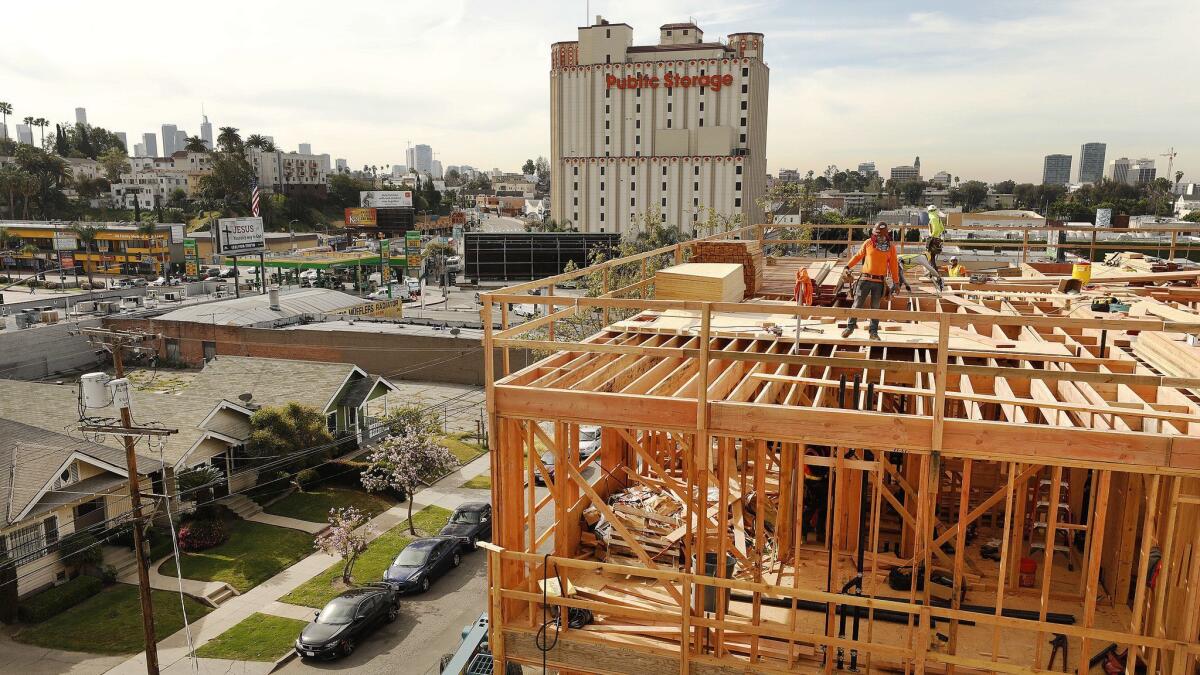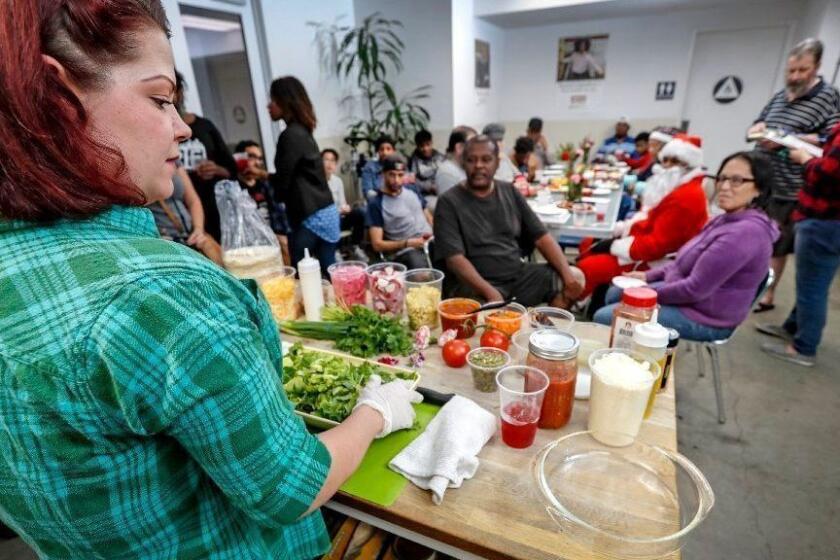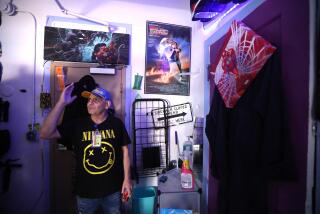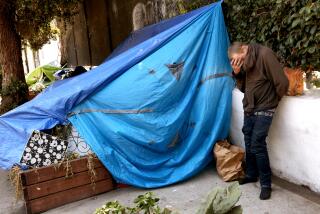Coronavirus and financial hurdles are delaying projects to build homeless housing

During an ebullient January ceremony for the first project completed with funding from the city’s Proposition HHH homeless housing bond, Los Angeles Mayor Eric Garcetti framed the moment as a turning point.
“We will see an opening of one of these about every three weeks this year,” Garcetti said.
That didn’t happen. Nearly six months later, there has been only one other opening to celebrate. Five other projects that were scheduled to open by now have not, and dozens of others have had their schedules pushed back by months.
Already sharply criticized for its slow progress and rising costs, the $1.2-billion bond program is in a new slump. A Times analysis of data from the Los Angeles Housing and Community Investment Department shows that 57 projects have fallen behind schedule since January. Of those, 21 were pushed back more than six months.
The coronavirus, which has disrupted contractors’ schedules and dragged out inspections, is only part of the problem.
A number of projects that have commitments for HHH funding are being delayed even before construction can begin because the federal rent subsidies that are crucial to their financing are drying up.
The Housing Authority of the City of Los Angeles, which oversees the federal Section 8 subsidies, faces a cap on the number of subsidies it can issue after committing nearly 5,000 to HHH projects. In the most recent round of applications, the agency approved fewer than 1,000 of the 3,450 rental vouchers developers sought.
With the vouchers running out, the agency has imposed a competitive scoring system favoring those that are closest to starting construction, said the authority’s president and chief executive, Douglas Guthrie.
“We’ve got such a huge pipeline of projects that came at us all at one time,” Guthrie said. “We can’t be issuing commitments and sit on those for years on end in the hope those projects move forward.”
Skid Row Housing Trust, a downtown nonprofit that develops supportive housing, has failed to make the cut three times for projects totaling 161 units in South Los Angeles and Van Nuys, spokeswoman Lisa Rios said. So far, Rios said, the delays in obtaining vouchers have extended the two projects by a year and a half and added $1 million to their costs.
On a cool December evening, a group of residents at the Charles Cobb Apartments in downtown made their way through the building’s open-air courtyard to the communal kitchen for a cooking class.
The shortage creates a predicament for developers who are facing decisions on investing money in land or design.
Nonprofit developer Bridge Housing has secured land for a 140-unit project. “We’d like to be moving full steam ahead on other expensive items, design drawings, all the rest,” Executive Vice President Kim McKay said. “We clearly want to make sure something as critical as the Section 8 is in hand so we can keep everything moving forward.”
Developers depend on the vouchers, which pay the portion of rent exceeding 30% of each tenant’s income, to cover long-term operating costs for projects dedicated to low-income housing.
Without that guaranteed income, they have to set aside a portion of their construction funds as an operating reserve, said Ed Holder, vice president for real estate development at nonprofit Mercy Housing, which has teamed with two other groups to build 360 supportive housing units on six properties. Investors are leery of being on the hook after those reserves run dry.
“Without rental subsidies, we can’t secure the private mortgage needed to finance our development,” said Robin Hughes, president and chief executive of Abode Communities, one of the agencies collaborating on the project.
Abode Communities is in escrow to acquire one property for a 90-unit building and is considering pursuing a second site for permanent supportive housing, Hughes said.
“The timing is very uncertain and we may need to pause on the next acquisition opportunity without an early, firm commitment for the subsidies,” she added.
The subsidy shortfall arises from an agreement between the city and the housing authority, an independent agency with its own governing board, to supply vouchers for projects receiving HHH funding. The agreement committed 1,000 vouchers annually for five years. The board upped that in June, authorizing another 1,000 vouchers, but that is still far short of the number needed to subsidize the 8,403 units that have been approved for HHH funding and thousands of others not receiving HHH funding.
When Proposition HHH was put on the city ballot in 2016, its backers assumed that the additional vouchers would come from the county’s Housing for Health program, said Ann Sewill, vice president for health and housing for the California Community Foundation and one of the architects of the measure.
After providing subsidies for 18 projects with 786 units, the county subsidy pool has fallen short too.
Barring a surge in federal subsidies — a solution with no immediate prospects — city and county officials are going to have to work it out with their own diminished resources.
“We started this together; we need to work out the problems together,” Sewill said.
Meanwhile, the coronavirus is compounding construction delays that have beset many HHH projects.
“Sometimes it’s really hard to tell to what extent it is a garden-variety delay and to what extent it’s COVID,” said Nicholas Halaris, chairman of the citizen committee that oversees HHH spending.
The 122-unit project being built by PATH, a statewide homeless services and development agency, next to its East Hollywood headquarters was once scheduled to be completed March 20. Then the opening was pushed back to April 20 and again to June 25.
An unexpectedly high water table had to be addressed, causing an initial delay, said PATH’s deputy chief executive, Jennifer Hark-Dietz. Then the coronavirus slowed down inspections and furniture delivery.
Now the opening is on hold indefinitely after a delayed inspection report required additional work.
Halaris said concerns about the virus have kept some subcontractors from showing up, pushing back the schedule of other subcontractors.
The plan approval process and inspections are also affected. Air travel restrictions have hindered a Chicago firm contracted to oversee disability compliance. And the Los Angeles Department of Building and Safety now requires developers to drop plans in a bucket outside and leave them untouched for two days.
“They put it in quarantine for a couple of days before they can touch it,” said John Arnold, a partner with KFA, an architecture firm working on several HHH projects. “The general feeling is everything is slow.”
More to Read
Sign up for Essential California
The most important California stories and recommendations in your inbox every morning.
You may occasionally receive promotional content from the Los Angeles Times.












